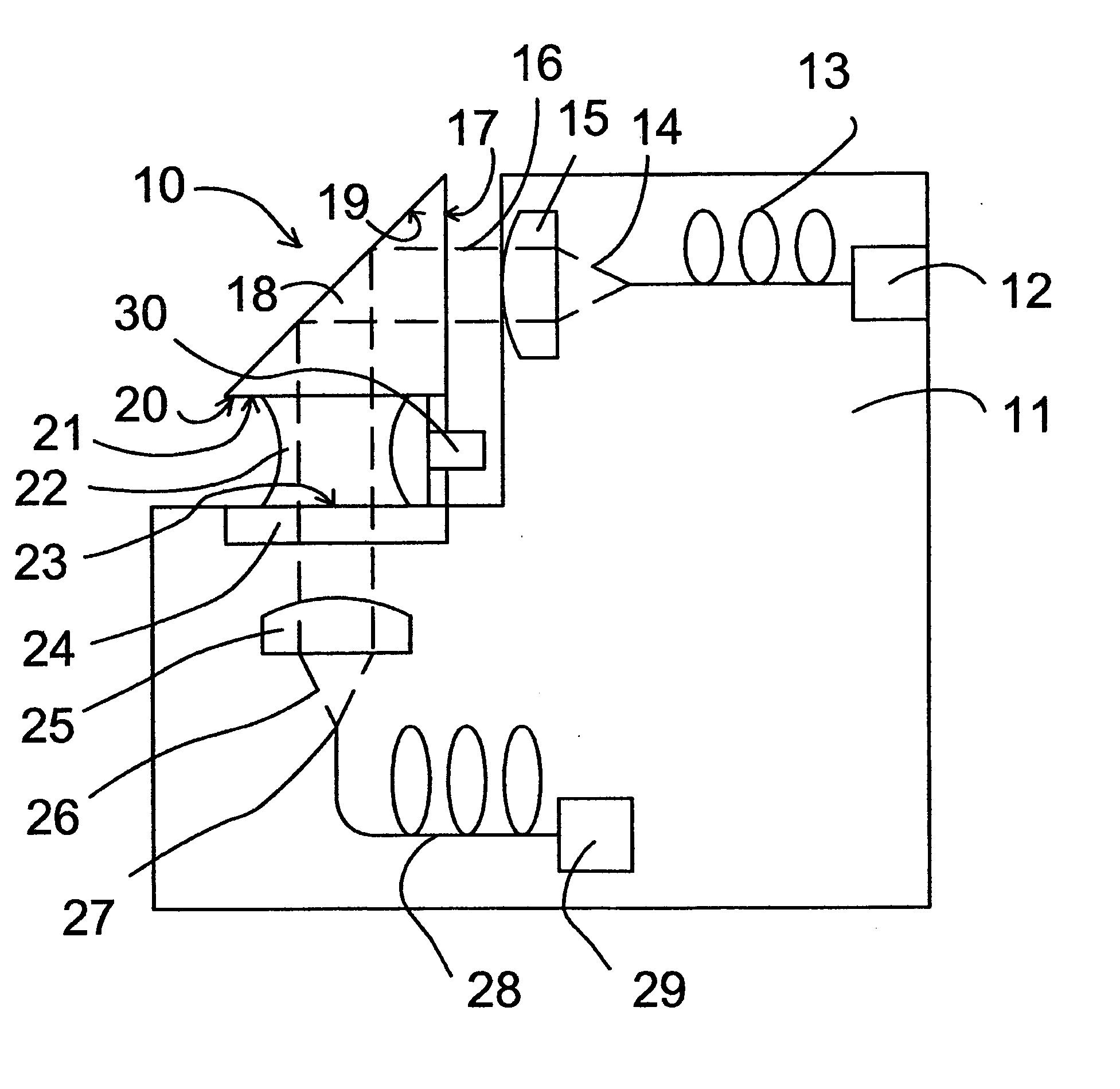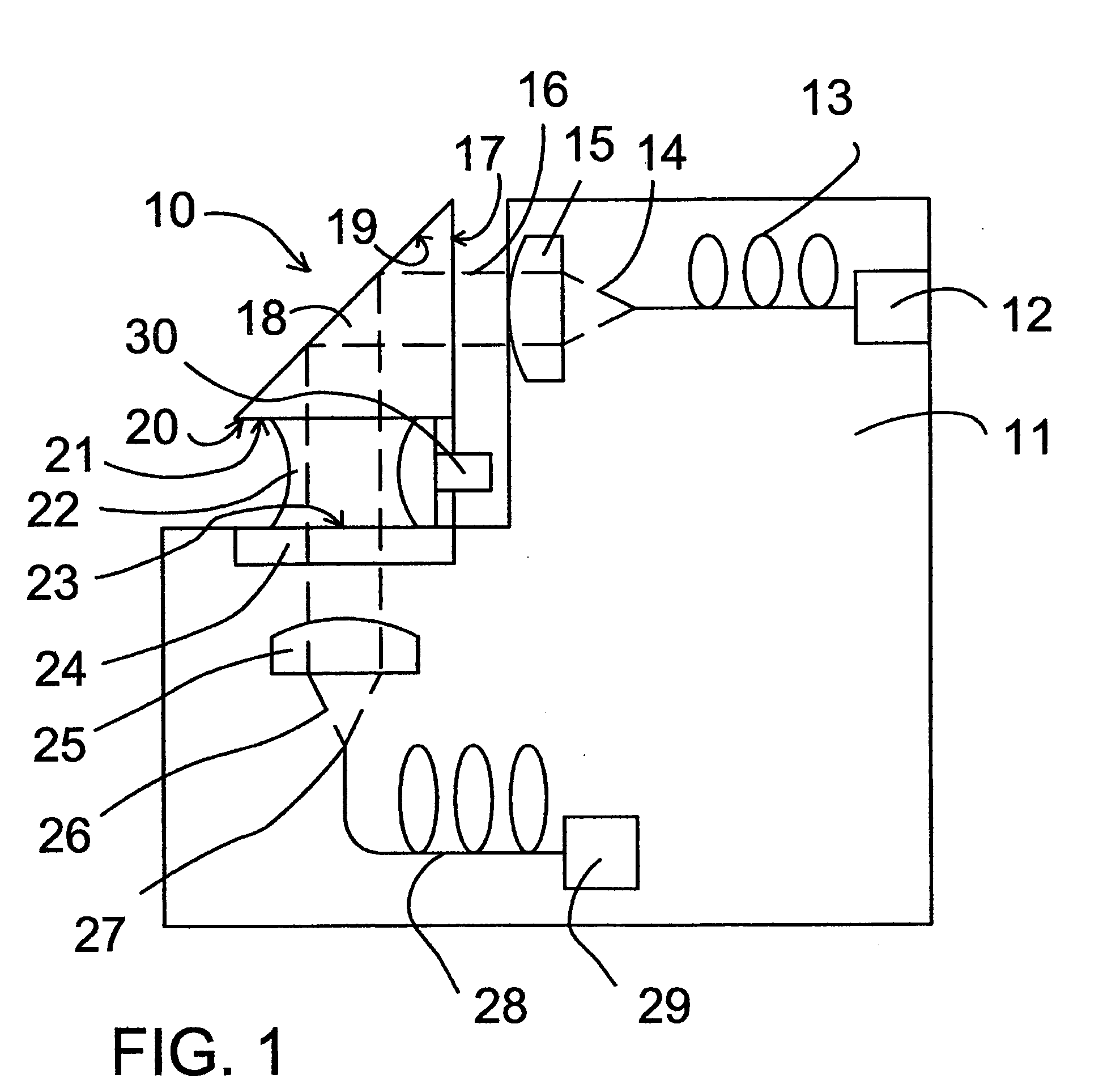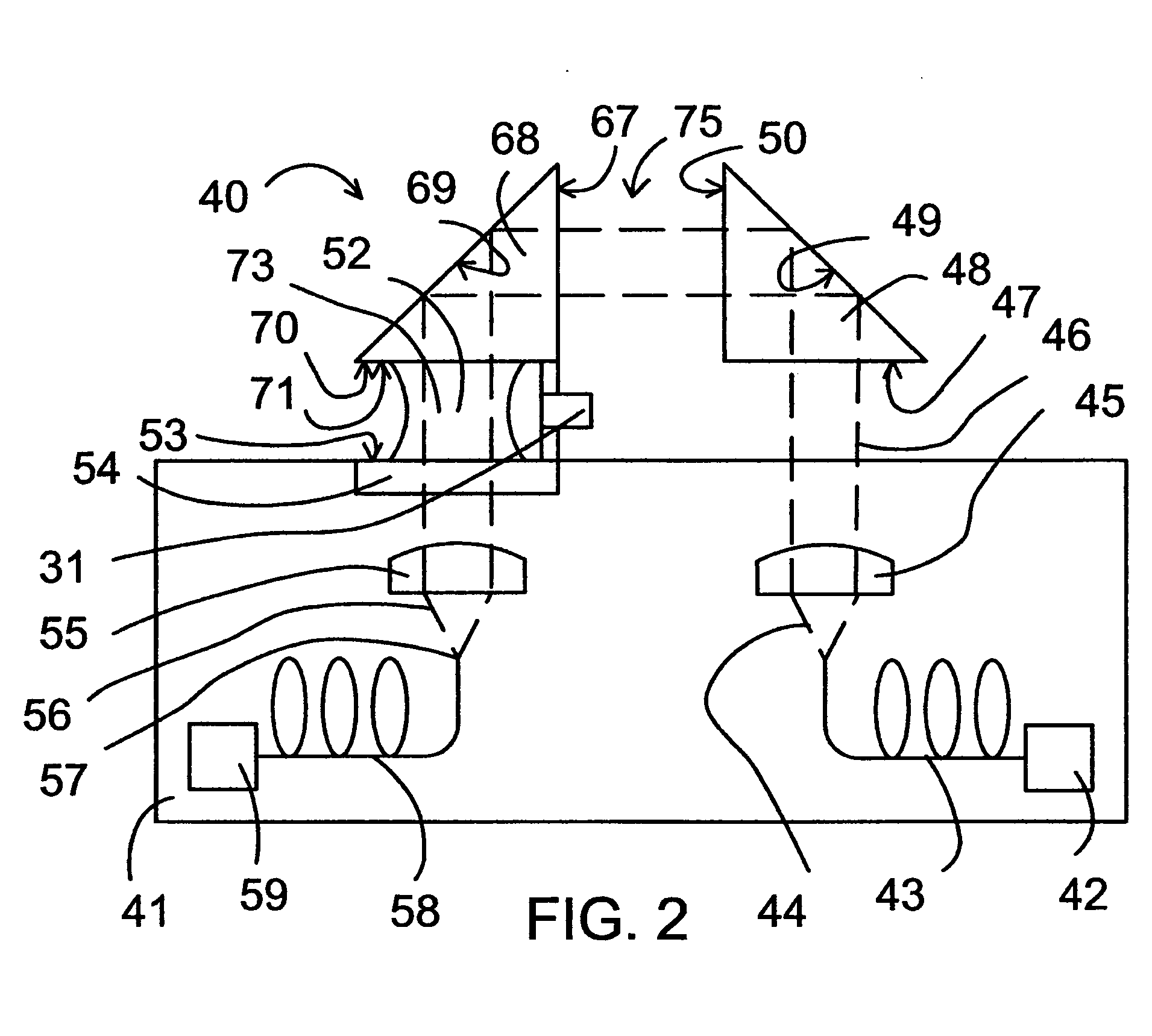Optical devices, systems and method for producing a collimated light path
a technology of optical devices and light paths, applied in the field of optical devices, systems and methods for producing collimated light paths, can solve the problems of inability to change the separation between the ends of the source and the detector fiber without significantly altering the amount of light collected by the detector fiber
- Summary
- Abstract
- Description
- Claims
- Application Information
AI Technical Summary
Benefits of technology
Problems solved by technology
Method used
Image
Examples
example 1
[0124] In order to explore the degree to which the divergent beam optics limited the use of a photometer design's in which the ends of the fiber were significantly separated, an experiment was conducted in which a broadband light source was coupled into a 200-micrometer-diameter multi-mode optical fiber; i.e. the source-side fiber. At the output of this fiber, it was observed that the light diverges. A second multi-mode optical fiber—the detection-side fiber—was placed a distance L from the source-side fiber and positioned so as to share the same centerline as the source-side fiber. Two detection-side fibers were tested: one with 200-micrometer core diameter and the other with 600-micrometer core diameter. A Silicon-photo-diode (Si-PD) at the output end of the detection-side fiber measured the spectrally integrated optical power coupled into the detection-side fiber.
[0125] Experimental data collected show that the optical power of the light beam dropped off quickly as fiber-to-fibe...
PUM
| Property | Measurement | Unit |
|---|---|---|
| path length | aaaaa | aaaaa |
| diameter | aaaaa | aaaaa |
| volumes | aaaaa | aaaaa |
Abstract
Description
Claims
Application Information
 Login to View More
Login to View More - R&D
- Intellectual Property
- Life Sciences
- Materials
- Tech Scout
- Unparalleled Data Quality
- Higher Quality Content
- 60% Fewer Hallucinations
Browse by: Latest US Patents, China's latest patents, Technical Efficacy Thesaurus, Application Domain, Technology Topic, Popular Technical Reports.
© 2025 PatSnap. All rights reserved.Legal|Privacy policy|Modern Slavery Act Transparency Statement|Sitemap|About US| Contact US: help@patsnap.com



